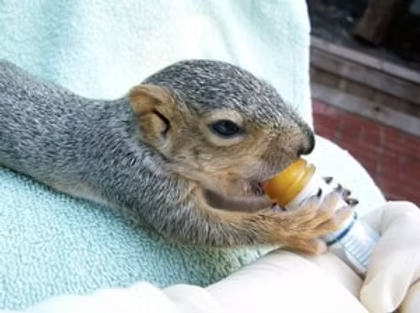🐿️ How to Care for a Baby Squirrel – A Guide for New Adoptive Families

Bringing home a hand-raised baby squirrel is a joyful and rewarding experience. These curious, affectionate creatures require attentive care, warmth, and a gentle touch to thrive in a domestic environment. Unlike wild or orphaned squirrels, the babies offered for adoption through our platform have been socialized and raised by experienced caregivers, making them ready for loving, responsible homes.
This guide will walk you through the essentials of baby squirrel care, including warmth, feeding, bonding, and transition to independence ensuring you provide the best start for your new companion.
Feeding a Baby Squirrel
Baby squirrels have specific dietary needs depending on their age and stage of development. Your adopted squirrel will come with clear feeding instructions, but here’s an overview:
What to Feed:
- Under 5 weeks old: Specialty squirrel formula or puppy milk replacer (not cow’s milk!)
- 5–8 weeks: Gradual introduction of soft foods (mashed fruits, unsweetened applesauce, squirrel blocks)
- 8+ weeks: Transition to solid squirrel diet, including rodent blocks, nuts, fruits, and veggies
Always use a small pet nursing bottle or syringe for feeding younger babies. Feed while the squirrel is upright to prevent aspiration.
📦 Tip: We include a starter care kit with every adoption, which contains feeding supplies and the first batch of formula.
Keeping Your Baby Squirrel Warm
Warmth is critical for a baby squirrel’s comfort and digestion. Even in a cozy home, a young squirrel needs help regulating body temperature, especially during sleep.
Use a squirrel-safe incubator or heating pad set to low, with soft bedding and an open den-like space for snuggling. Your baby should always have a warm and a cool side of the enclosure to choose from.
Bedding & Housing
Set up a quiet, secure space for your squirrel. A starter enclosure should include:
- Soft fleece or flannel bedding (no loose threads)
- A shallow dish for water (if appropriate for age)
- Chew toys and safe climbing surfaces (as the baby grows)
- Ventilation and protection from drafts
As your squirrel matures, transition to a larger indoor enclosure or cage designed for small mammals, with shelves and hiding spaces.
Socialization & Bonding
Hand-raised squirrels are used to human contact but still require gentle, consistent interaction to feel secure.
- Hold the baby close to your chest in a warm cloth for short periods
- Speak in a calm voice to build familiarity
- Allow safe supervised playtime in a squirrel-proof room
Avoid over-handling during rest periods, and never expose the baby to predators such as cats or dogs.
Important Reminders
Monitor for signs of stress or digestive upset (diarrhea, lethargy, weight loss)
Do not use wild squirrel care guides; your squirrel has been raised in a home environment
Do not feed dairy, processed human foods, or sugary snacks
Avoid drafts, loud noise, and high places where the baby could fall
